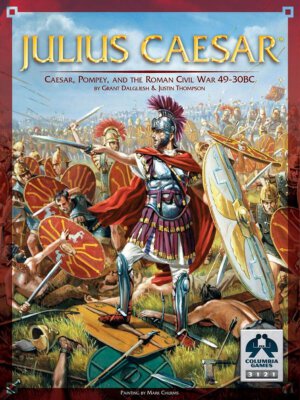
Publisher: Columbia Games
Designers: Grant Dalgliesh and Justin Thompson
Artists: Karim Chakroun and Mark Churms
Year: 2010
Players: Two players
Ages: 10+
Playing time: Around two hours
MSRP: $65.00
I’ll be the first to mention I haven’t played many Columbia Games. I can’t say why that’s the case, seeing I recall playing Bobby Lee (or maybe it was Sam Grant.. )years ago at a Gen Con in Milwaukee and enjoyed the experience quite a bit. I believe that was probably the first time I played a block wargame too. If Julius Caesar is any indication of what can be expected from Columbia Games I can say with certainty that I’ll be checking out a lot more of their titles in the future!
The setting of Julius Caesar is the Roman Civil War between Caesar and Pompey which took place from 49–45 BC. Those of you who watched the HBO series Rome will be familiar with this point in Roman history. Caesar and Pompey were sharing the rule of the Roman Empire when Caesar made the decision to march on Rome to seize rule for his own.
The components are nicely done with an extremely attractive game board as well as properly proportioned and cut blocks. One a side note, have you ever noticed that some games have a multitude of pieces supposed to be exactly alike yet those pieces never are? That isn’t the case with Julius Caesar and that’s important because all of the blocks, outside of the two spare blocks included, require stickers to be placed on one of their sides. The rulebook is only eight pages in length and well thought out. I will mention that there is a new version (1.01) of the rules available for download that will answer some questions that may arise during play and are a bit more complete than the original. The PDF download is also very nicely presented in color as opposed to the B&W rules included in the box. For the most part the rules, as they came with the game, are fairly clear except for possibly an exception or two. I was also a little surprised the map wasn’t mounted but after a few plays I notice the map is sturdy enough to hold up, as are the included cards, but with a MSRP of sixty-five bucks I would expect a mounted board.
All in all, the components shape up very well and I don’t have any issues with them; everything looks and feels good. On occasion I’ve seen Columbia will offer a mounted board for an additional purchase and I hope that turns out to be the case here. This is me we’re talking about and it isn’t a stretch of the imagination for me to spill a drop or two of an adult beverage on a game board while I’m playing…
Julius Caesar takes place over the five year period of the civil war and each year is broken down into five turns. Each turn is further broken down into three phases: Card Phase, Command Phase, and Battle Phase. At the beginning of each year both players are dealt six cards of which one will be discarded. These cards will help drive the action although not to the same extent as say a card driven game from GMT. The game has very simple victory terms: the first player to ten victory points is the winner. Victory points are earned by cities controlled and military leaders killed in battle.
In the Card Phase each player will place one of their cards facedown to be revealed simultaneously. If each is a Command Card, the Movement and Levee factors will be used by the owning player for that turn. If one of the cards is an Event Card that event (really a special ability) will take place. If both cards are Event Cards neither event takes place and the upcoming turn is skipped completely.
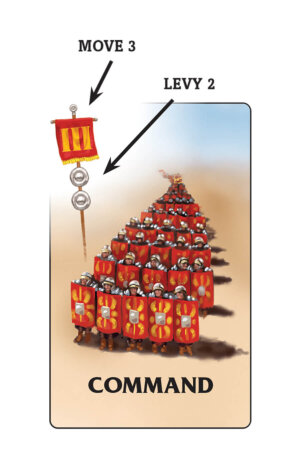
The Battle Phase is obvious enough as the opponents clash over locations around the map vying for control of those precious Victory Points.
Players have the opportunity to play as Caesar or Pompey. Caesar begins the game with veteran units while Pompey has weaker units that are scattered across the map. Pompey does control more cities and commands the Roman fleet so he can transport troops by sea. Each side has their own strengths and weaknesses while playing very balanced. As mentioned previously, the first to ten VPs is crowned the victor and Pompey begins with seven VPs to Caesar’s one. This means Caesar must act quickly and aggressively to take cities away from Pompey. Pompey must delay Caesar and look for every chance to strike at Caesar’s forces where the odds are in Pompey’s favor.
Julius Caesar employs a fog of war (as do most block games) so each player usually won’t know the exact composition of the forces arrayed against him. Of course, once the blocks are revealed in battle you can do your best to remember what units were present but, with the units moving all around the board, that might sound simpler in theory than reality. Each block depicts the type of unit, its combat factors and the number of steps, or hits, it can lose. Each time a unit loses a step, the block is rotated 90 degrees, so the top of the block’s sticker shows how many steps remain. Every unit sticker displays the Combat Type (A-D) for that unit as well.
There are twenty seven cards included in the game: Twenty Command Cards and Seven Event (or what I like to call divine intervention) Cards. Command Cards display the number of locations you can move units from as well as the number of reinforcement (or Levee Points) that can be used this turn. The Event Cards provide special 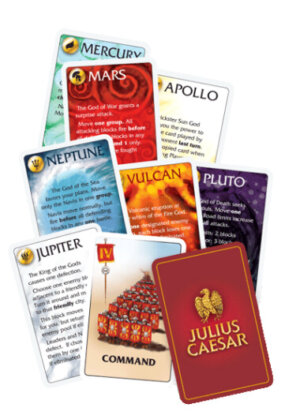
Julius Caesar uses a point-to-point movement system as opposed to hexes. This plays very well although it can become a bit crowded in certain areas when both players are about to battle for an important city or port. The Command Cards indicate how many locations units can move from. This is important to keep in mind because it isn’t the number of units that the card is indicating may move but locations that you may move groups of units, one or two cities, from! There are two types of roads in play and these will determine how many units may move by way of them in a given phase.
Combat is quick and dirty and the A,B,C,D method used in other Columbia releases (from my understanding) plays very nicely. All blocks participating in combat (not reserves) are shown to your opponent. “A” blocks are then paired with opposing “A”s, ”B” blocks with “B”s, and so on. The defender then rolls his “A” blocks and the attacker takes any step losses inflicted. Next, the attacker rolls his remaining “A” blocks and then the battle moves on to the “B”, “C”, and “D” blocks that may be present. A second round of battle then follows (reserves can be brought into the fight at this point) following along the same lines as the first. This second round also allows for units to retreat from battle, although lower classed units can have a difficult time of it. Any units eliminated are placed to the side because they are never eliminated but can be recruited once again in a later year. Any killed leaders are handed over to your opponent for VP scoring with one exception: Cleopatra.
The Egyptian queen makes an appearance in Julius Caesar as a special unit. Whoever controls Alexandria has control over Cleopatra’s army. She tends to be a rather fickle ally and throughout the game she’ll tend to come under the control of both Pompey and Caesar. If her unit is eliminated it is simply returned to Alexandria. Interestingly enough, even though control of Cleopatra has no effect on VPs and her unit really doesn’t add much to the controlling player’s forces, most games I’ve played had each player doing their best to keep her on their side. It just doesn’t seem as if Cleopatra adds much to the game although it’s nice that the unit is included in the 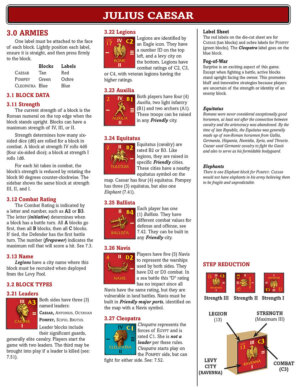
Each year ends with a Winter phase in which Cleopatra returns to Alexandria, all Navis at sea must return to a friendly port and all other units are checked to see if their city can support them throughout the winter months. Any unit considered out of supply (that cannot return to port or are over the support limit for their city) must be disbanded. These units can be recruited once again in the next, or later, year.
Julius Caesar is a prime example of one of those games that is easy to learn and hard to master. The game has almost a chess-like feel to it, in the beginning, because the situations facing both Pompey and Caesar early on demand attention. Each side has their own challenges (Caesar already being down six VP and Pompey having weaker units which are scattered) to overcome and these opening moves are a great source for trying out new strategies. If the Caesar player sits on his hands the civil war will end abruptly; if the Pompey player doesn’t consolidate forces and recruit heavily he’ll find it impossible to hold onto those crucial cities worth VPs. Both sides appear to be equally balanced and provide a good challenge, although I might recommend someone being introduced to the game to play Pompey because his onus isn’t to immediately take to the offensive and the player will have a little time to ease into the game.
At the end of the day, those who are looking for a great game to invest a couple of hours into will find so much to like in Julius Caesar that this game demands a purchase. This isn’t a true historical simulation and many of the concepts of ancient combat are abstracted so those who are looking for thirty pages of rules to simulate the period could be disappointed. But that shouldn’t matter to a good ninety five percent of the folks reading this review. The majority of gamers could do a lot worse than adding Julius Caesar to their collection and the game makes an excellent introduction to those who have never tried a title from Columbia Games!



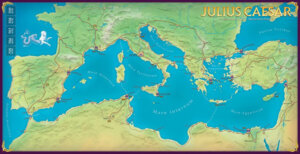








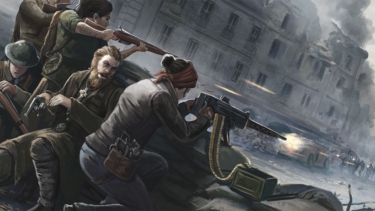

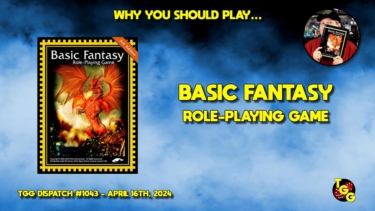
1 Comment
When you come to chicago next bring this bad boy, I am obsessed with roman war games